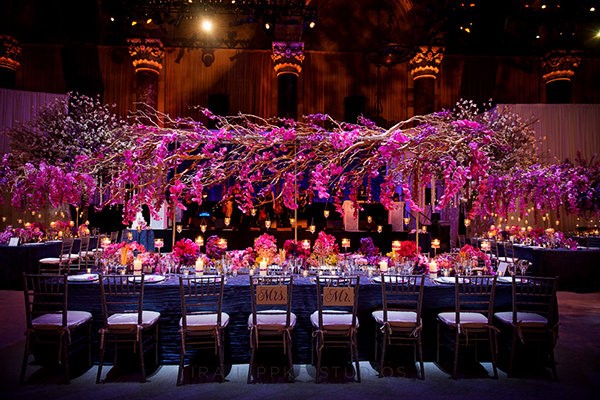
Bringing Color to Your Wedding: Make Your Decor Come to Life
Liam Beliveau
 Wedding flowers evoke a sense of celebration. One of the most expressive ways to set the mood and style of your wedding is through color. Lisi’s expert knowledge of color theory, form, and composition is essential to successful wedding floral design and styling. And, after working in the luxury wedding industry for over a decade, she’s helped numerous brides realize their perfect wedding colors and style.
Wedding flowers evoke a sense of celebration. One of the most expressive ways to set the mood and style of your wedding is through color. Lisi’s expert knowledge of color theory, form, and composition is essential to successful wedding floral design and styling. And, after working in the luxury wedding industry for over a decade, she’s helped numerous brides realize their perfect wedding colors and style.
So, first things first…
How to Start Finding Your Colors
I always advise our brides to avoid anything that seems too trendy. Begin by considering colors that really resonate with you and generate an emotional response. You’ll want to look back at your wedding photos years from now and still be happy with what you see. Other factors to bear in mind include the time of year, venue, and color of your bridesmaids’ dresses. These early decisions should all play a role in determining your overall color scheme.
There are so many options now where people can draw inspiration for their wedding: Pinterest, wedding magazines, and specialty wedding blogs. For this reason, clients generally have an idea of what they want before they come. However, if you don’t have a general idea of what you want, there’s certainly room to explore.
Although every bride has their own aesthetic, if you are planning for a fall or winter wedding, you may want to incorporate darker, moodier colors, like rich bordeauxs and earth tones. These colors have depth and complexity, but also require more work when used in wedding décor and styling. Although we’ve done many wedding with combinations of blush, ivory, and champagne.
The Classic White New York Wedding
If I had to use one color to describe the classic New York wedding, it would be white. Brides just love their white in New York. And, it’s a color that does not change by season. An all-white wedding is always glamorous, but you can always update the look by adding some greenery for a modern touch.
Using white? Keep this in mind:
I could do a whole post on the complexities of white flowers. Some clients want a ‘pure white’ wedding. Very few flowers that are pure white exist in the natural world, like Tibet roses, white Phalaenopsis Orchids, or white Ranunculus. A lot of white flowers have hints of blush, cream, yellow or green.
Other variables such as the time of year, growing conditions, and lighting affect a flower’s whiteness. Also, remember that most of the photos you see online have been digitally altered and do not represent the flower’s actual color. And there are many shades within the white spectrum such as ivory and cream.
The Colors of the Season
Each season is associated with a certain set of colors and mood. Once spring hits, we see clients using more vibrant, and adventurous color schemes. This carries on through summer when we see a lot more use of greenery accents. During fall, neutrals along with shades of burgundy, wine, and deep purple become more popular. Winter weddings are accented by the color white. Festive greenery and touches of red are often added to weddings that take place around the holidays. However, some brides don’t want to look too festive and stick to white with softer accents.






